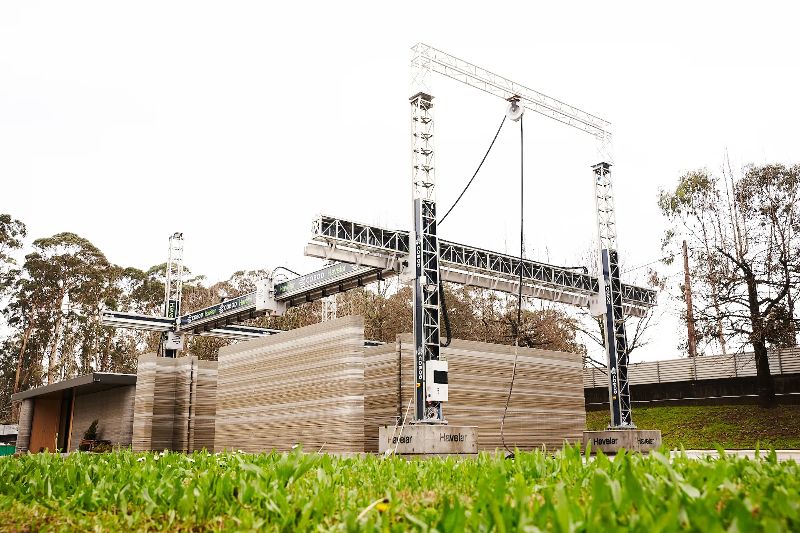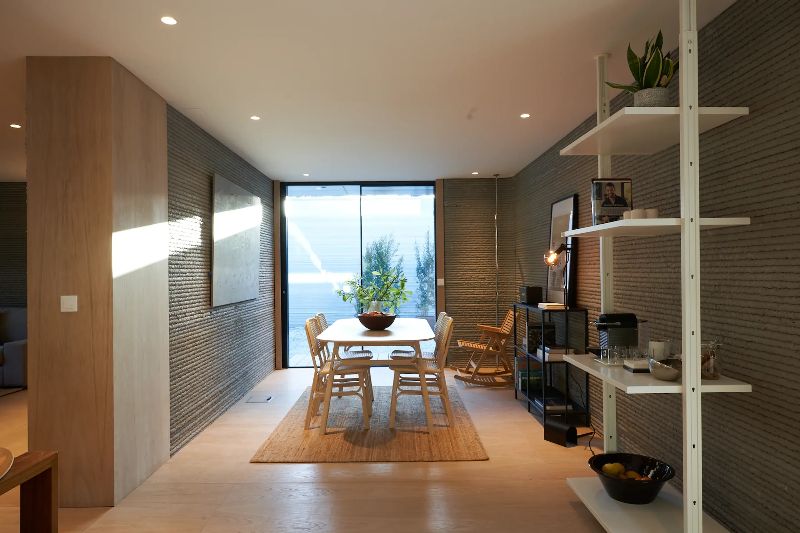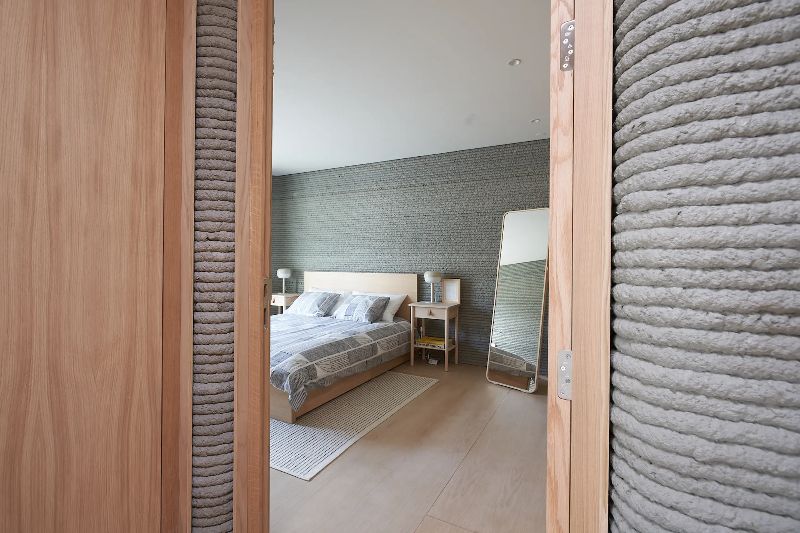

Rapid construction meets affordable living with Portugal’s Havelar 3-D printed home.
An affordable starter home has been constructed using 3D printing technology in just 18 hours by Portugal’s Havelar. The home, located in the Greater Porto area, is a modest two-bedroom residence covering 80 square metres. (main pic: Located in the Po Havelar 3-D printed home rto area of the Iberian Peninsula, Havelar’s 3-D printed home measures approx 80sqm.)
Constructed using COBOD’s BOD2 printer, the same device employed for Europe’s largest 3D-printed building, the house was produced at a cost of €1,500 (AUD $2,460) per square metre. This rate is significantly below the average cost of €3,104 (AUD $5,100) per square metre in Porto, according to COBOD. The reduced cost is attributed to the rapid construction capabilities of the 3D printer, which builds the home’s structure layer by layer from a cement-like mixture.

While the printing process required only 18 hours, the completion of the house, including installation of windows, doors, panelling, and roofing, required the efforts of human builders and took less than two months in total.
Watch a report on Havelar’s 3-D printed home
The home features a simple, single-storey design with ribbed walls characteristic of 3D printing. Its interior includes a central kitchen and dining area, a living room, two bedrooms, and a bathroom. Compared to more elaborate models such as the high-end Wolf Ranch homes, this residence is basic and significantly less expensive, targeting a different market segment.

This project marks Havelar’s first venture into 3D-printed homes. Looking ahead, the company aims to scale up its production and achieve carbon neutrality by 2030. Plans include the adoption of alternative construction materials such as earth and straw.

Rodrigo Vilas-Boas, Co-Founder of Havelar, expressed ambitions for future collaborations: “We want to team up with partners who see themselves in building sustainable and accessible communities.” He added that with an investment of €150,000 (AUD $246K), a young couple could afford their dream home in a well-serviced area.
See: https://havelar.com/